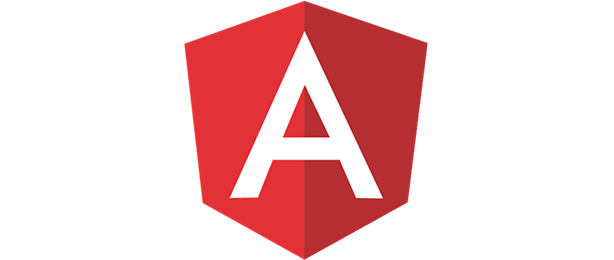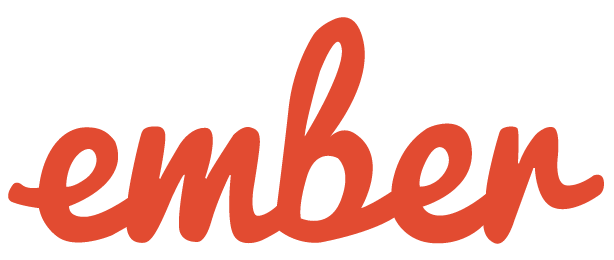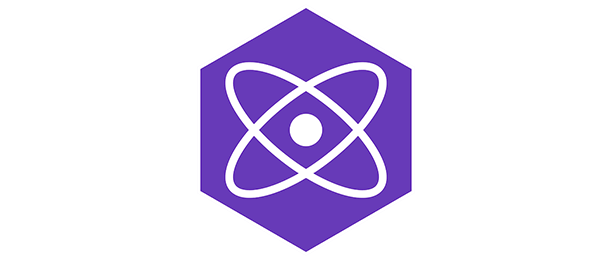In the dynamic world of web development, staying on top of the latest trends and technologies is crucial for success. Front-end development, the art of creating user interfaces and experiences, has seen a remarkable evolution over the years. One of the key drivers behind this evolution is the emergence of powerful front-end frameworks. These frameworks, which combine libraries, tools, and best practices, streamline the development process and empower web designers and developers to craft stunning web applications. According to Statista, 66% of the global population is using the internet as of 2022, showcasing the immense demand for innovative and user-friendly web applications.
In this article, we will dive deep into the realm of the best front-end frameworks in 2023, providing you with insights to help you choose the perfect framework for your project. As we delve into the realm of the best front-end frameworks in 2023, it’s essential to consider the hosting environment that supports these applications. To learn more about web hosting and its role in the success of your web development projects, you can explore our comprehensive guide: What Is Web Hosting? An Easy Guide to Web Hosting Services.
Table of Contents
What Is Front-end Development?
Frontend development involves shaping the user-facing aspects of a web application. It encompasses everything a user interacts with directly – from buttons and forms to layout and navigation. Think of it as the visual and interactive layer that transforms lines of code into engaging and intuitive experiences. As web technology evolves, so does the complexity of front-end development. It’s not just about aesthetics; it’s about creating seamless, responsive, and feature-rich interfaces that captivate users and keep them engaged.
What Are Front-end Frameworks?
Front-end web frameworks are a godsend for web developers. They provide a /blog/understanding-website-structure/blog/understanding-website-structure and a set of pre-written code snippets that accelerate the development process. Essentially, they offer a toolbox filled with pre-designed components and tools, allowing developers to focus on creativity rather than reinventing the wheel. Front-end frameworks also promote consistency and maintainability, ensuring that your web app adheres to industry best practices. These frameworks are designed to be versatile and adaptable, catering to a wide range of projects – from small apps to complex, feature-packed applications.
Benefits of Frontend Frameworks for Web Development
The benefits of leveraging front-end frameworks for web development are manifold. Firstly, they streamline the development process, enabling you to build robust web applications in less time. This is particularly valuable in today’s fast-paced digital landscape, where time-to-market can make or break a project. Secondly, frameworks provide a unified structure that enhances collaboration among development teams. Consistent coding patterns and modular components make it easier for multiple developers to work on the same project seamlessly.
Frameworks streamline the development process, enabling you to build robust web applications in less time
Additionally, front-end frameworks often come with built-in optimisation techniques, ensuring that your web application performs efficiently across various devices and browsers. This contributes to a positive user experience and can impact your website’s search engine ranking. Moreover, frameworks facilitate code reusability, allowing you to repurpose components and save valuable development hours. As an added bonus, many frameworks offer extensive documentation and an active community of developers, providing a wealth of resources for troubleshooting and learning.
Exploring the Top 7 Frontend Frameworks of 2023
Now that we’ve delved into the overarching benefits of utilising front-end frameworks, let’s embark on a journey to explore the top 7 front-end frameworks of 2023 that are redefining web development. These popular front-end frameworks will provide developers with a streamlined development process and a cohesive structure making it faster and easier to build web applications. They also offer enhanced performance and better user experiences.
React

React, with around 20.5 million weekly downloads on npm, stands out as one of the most widely adopted front-end frameworks. Developed and maintained by Facebook, it is a front-end framework that has taken the web development world by storm. Known for its component-based architecture and virtual DOM (Document Object Model), React empowers developers to create interactive user interfaces with ease. Its popularity is driven by its exceptional performance, scalability, and the ability to build complex applications efficiently. React’s ecosystem also boasts a plethora of libraries and tools, making it a preferred choice for many developers.
Angular

Angular, an open-source framework developed by Google, is a powerhouse for building dynamic web applications. With a focus on declarative templates and two-way data binding, Angular simplifies the development of real-time, data-rich interfaces. Its comprehensive feature set includes dependency injection, robust testing tools, and a modular architecture. Angular is an excellent choice for projects that demand a high degree of structure and complexity.
Vue.js

Vue, often touted as the “progressive” JavaScript framework, strikes a balance between simplicity and functionality. Developed by a group of independent developers, Vue is renowned for its gentle learning curve and flexibility. Whether you’re building a small web application or a sophisticated enterprise application, Vue’s versatile nature makes it a top contender. Its reactivity system and single-file components enhance productivity, while its active community ensures a steady stream of updates and plugins.
Svelte

Svelte takes a unique approach to frontend development by shifting much of the heavy lifting from runtime to compile time. This results in smaller and faster apps with exceptional performance. Developed by Rich Harris, Svelte is an ideal choice for creating highly efficient and responsive web applications. Its intuitive syntax and seamless integration with web components make it a compelling option for developers looking to optimise their projects.
Ember

Ember, one of the oldest open-source JavaScript front-end frameworks, has stood the test of time. Known for its convention-over-configuration approach, Ember provides a set of opinions and best practices that simplify development decisions. It offers a wide range of tools and abstractions, making it well-suited for ambitious projects that require structure and scalability. Ember’s commitment to stability and its focus on developer ergonomics make it a reliable choice for long-term projects.
Preact

Preact is a lightweight front-end framework that packs a powerful punch. Compatible with the React ecosystem, Preact offers a similar development experience while boasting a smaller footprint. This makes it an excellent choice for projects where performance is paramount, such as single-page web applications. Preact’s small size doesn’t compromise on features, and its compatibility with existing React codebases allows for easy integration.
Solid

Solid, a relative newcomer to the front-end framework scene, has quickly gained attention for its innovative reactivity model. Developed by Ryan Carniato, Solid focuses on fine-grained reactivity, resulting in highly optimised and performant applications. Its small size and minimalistic design contribute to fast load times and efficient rendering. Solid’s approach to reactivity also reduces the risk of common bugs and optimisation challenges.
Choosing the Best Frontend Framework for Your Project
Opting for the best framework for your project necessitates a meticulous examination of diverse factors, including the complexity of your application, your familiarity with the framework, the size of your development team, and the specific requisites of your project. Here are some actionable steps to guide you in making an enlightened decision:
- Evaluate Project Requirements: Scrutinise the scope and objectives of your project to ascertain which framework aligns seamlessly with your aspirations. Consider variables like scalability, performance, and the genre of application you’re sculpting.
- Assess Learning Curve: Factor in your team’s expertise with different frameworks and their respective learning curves. When deciding on a framework to learn, opt for one that resonates with your team’s proficiency to ensure an effective development process.
- Community and Support: Gauge the size and vibrancy of the framework’s community. A thriving community guarantees access to resources, tutorials, and timely assistance when encountering challenges.
- Performance Deliberations: Contemplate the performance prerequisites of your application. Certain frameworks furnish optimisations tailored for hastened loading times and refined user experiences.
- Integration Possibilities: If you’re interfacing with existing codebases or libraries, choose a framework that seamlessly integrates with your prevailing stack.
- Longevity and Updates: Factor in the framework’s release cycle and update frequency. Opt for a framework that maintains active development and consistent updates to stay abreast of the latest trends in web development.
- Trial and Experimentation: Prior to committing to a framework, experiment by constructing a miniature prototype to assess its compatibility with your project’s needs.
FAQ for Front-end Frameworks
Can you recommend a framework for building web and mobile applications?
React is a great framework for building both web and mobile applications. It allows for code reuse and provides tools like React Native for building native mobile apps.
What is the best front-end framework for building progressive web apps?
Angular is an excellent choice for building progressive web apps (PWAs) as it offers built-in support for service workers, offline capabilities, and performance optimisations.
Which front-end frameworks are widely used for building websites and web applications?
React, Angular, and Vue.js are widely used front-end frameworks for building websites and web applications.
Are there any specific frameworks based on a particular programming language?
Yes, Angular is based on TypeScript, while React, Vue.js, Svelte, Ember, Preact and Solid can be used with JavaScript or TypeScript.
Are front-end frameworks only for web development?
Front-end frameworks are primarily used for web development but can also be utilised for building hybrid or mobile applications using frameworks like React Native or Ionic.
Are there any development tools available for working with front-end frameworks?
Yes, front-end frameworks have extensive ecosystems with development tools like Create React App, Angular CLI, and Vue CLI, which provide boilerplate code, build tools, and development servers to streamline the development process.
In Conclusion
As you embark on your journey as an aspiring web developer, creating web applications becomes a riveting and gratifying pursuit. Armed with insights into the top 7 front-end frameworks of 2023, you possess the acumen to make informed decisions that will steer your projects towards triumph. Remember, each framework bears its own unique strengths and merits, so embark on an expedition of exploration, experimentation, and discovery to unearth the ideal framework for your development odyssey.
At MCloud9, we understand the importance of seamless web hosting and domain registration to complement your chosen front-end framework. As a reliable and authoritative web hosting company, we’re here to support your web development journey by providing the foundation for your digital endeavours. Whether you’re building a small web app or a complex web application, MCloud9’s hosting services are designed to ensure your website performs optimally and delivers an exceptional user experience.
In the dynamic realm of web development, choosing the right front-end framework can set the stage for success. Armed with the knowledge of these top front-end frameworks and their unique attributes, you’re well-equipped to embark on your web development journey and create remarkable digital experiences that captivate and delight users.


